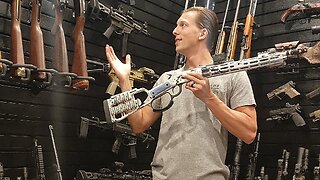Science in Action #355: Earth's Radiation Belt (1959) | California Academy of Sciences
Episode #355, "Earth's Radiation Belts," explored the methods used by scientists at the Lawrence Livermore National Laboratory to determine the intensity and effects of Van Allen radiation belts surrounding the Earth. This particular episode aired in 1959 -- two years after Soviet dog Laika became the first animal in orbit, two years before Russian cosmonaut Yuri Gagarin completed the first successful human spaceflight, and three years before astronaut John Glenn piloted the Mercury-Atlas 6 around the Earth. In 1959, the question voiced by host Earl Herald was one of the key scientific mysteries at the start of the Space Race: "what [are these radiation belts] going to mean for the first person to take off from the earth as a space traveller?"
Herald interviewed three researchers at the Lawrence Livermore National Laboratory (then known as the Lawrence Radiation Laboratory at UC Berkeley). Dr. R. Stephen White (Leader of the Nuclear Effects Group), Dr. Stanley Freden (Senior Staff Physicist), and Dr. Hal Oliver (Head of Processing Department), explained LLNL's method of radiation testing in the Van Allen belts: mounting an emulsion stack on a rocket, which was then launched into the region of the radiation belts using a rockoon (a rocket suspended from a high-altitude balloon), recovered upon returning to Earth, and processed to test for radiation intensity.
Further Info:
http://americanmoon.org/VanAllen/index.htm
Mirrored - California Academy of Sciences
-
 1:13:59
1:13:59
Tactical Advisor
5 hours agoVault Room Tour/Unboxing- Vault Room Live Stream
19.9K2 -
 1:11:28
1:11:28
The Squad
11 hours agoArsenal's Huge Summer🚨Olise to Man Utd DEAL✅ Osimhen to Arsenal or Chelsea☑️ UCL Final Preview
39K6 -
 56:23
56:23
Trumpet Daily
1 day ago $1.10 earnedCohen Is Free to Lie and Steal, but Trump Is Guilty of Something - Trumpet Daily | May 31, 2024
31.1K50 -
 8:26
8:26
MichaelBisping
23 hours agoBISPING CHOKES OUT STEVE-O! | JACKASS STAR PUT TO SLEEP BY UFC CHAMP! *FULL VIDEO*
52.6K13 -
 20:00
20:00
Clownfish TV
22 hours agoGoogle Hurt ITSELF in Its Confusion!
58.8K56 -
 24:20
24:20
Brewzle
1 day agoWe Went Unicorn Bourbon Hunting In Louisville, KY
58.9K8 -
 35:39
35:39
Degenerate Jay
1 day agoGoldenEye 007 Saved James Bond - Movie Review
55.1K6 -
 14:54
14:54
Mr Reagan
1 day ago $0.46 earnedWE ARE ALL MAGA NOW
46.1K108 -
 15:35
15:35
Space Ice
1 day ago'The Beekeeper' Exposes The Dark, Gritty, & Violent World Of Apiculture - Best Movie Ever
48.5K23 -
 3:29:53
3:29:53
SonnyFaz
1 day agoEric Kelly Trains Sonny FULL STREAM
48K12